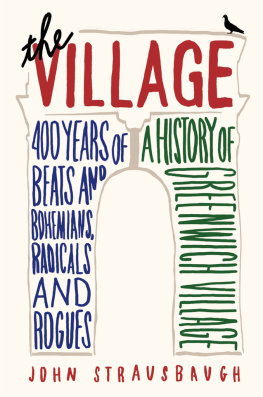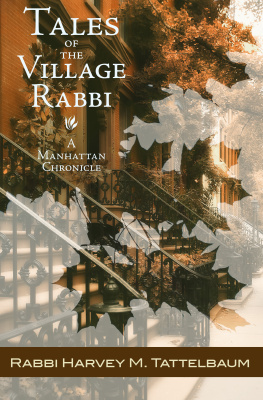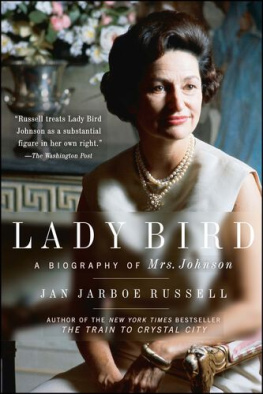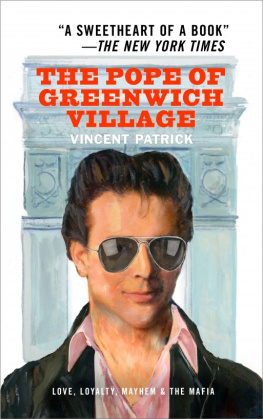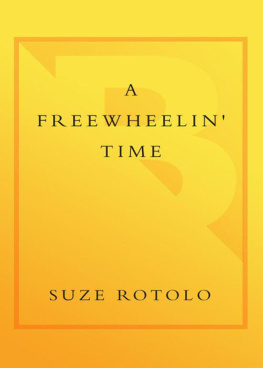
Contents
AMERICA WAS ONE THING AND GREENWICH VILLAGE ANOTHER.
Ronald Sukenick
Y OU COULD SIT ON A BAR STOOL AND LOOK OUT OF THE WINDOWS to the snowy streets and see heavy people going by, David Amram bundled up, Bob Dylan writes of his early 60s Greenwich Village days in Chronicles. Half a century later, you can sit in one of the open-front cafs along Cornelia Street and still see Amram, now in his eighties and looking anything but heavy, striding up the middle of the quiet block. Gray curls halo his face. He wears a dark suit, dark shirt, and polka-dot tie, with rings on many fingers and a few pounds of necklaces, amulets, and medallions dangling and clanging from his neck. One of his daughters gave him the first few, and he added more as talismans representing his travels. The overall effect is of a hip Jewish shaman. He carries his French horn in one hand and in the other cloth bags stuffed with more instrumentspennywhistles, a tambourine, exotic flutes from China and the Native American West, an Egyptian doumbek. When asked where his roadie is, he says, Im my own roadie. It keeps me fit. Smiling, buoyant, full of what they used to call pep, he radiates a kind of spiritual fitness as well, an unalloyed joy to be in the world, making music in it, tending the flame of jazz and Beat spontaneity. Its contagious. Just standing near him peps you up too.
Hes got a gig tonight, down in the narrow basement cabaret of Cornelia Street Cafe. Hes got a gig somewhere most every night; hes been in perpetual motion for decades. He returns to the caf periodically to split whatevers collected at the door with his quartet because, he says, he wants to keep a connection alive, an ethos he remembers animating the Village in the mid-1950s. Its not about money. I dont think Saint Francis had a big stock portfolio, but nobody would say he was a failure, he says. Its about spirit and conduct and morality and standards.
Amram is a composer of jazz, orchestral music, opera, film, and theater scores (the original Manchurian Candidate, Splendor in the Grass ). Hes a multi-instrumentalist (piano, brass, reeds, flutes, percussion, much else) and comfortable in musical forms from many eras and cultures. The instant he arrived in the Village, in 1955, he started playing in the clubs. He soon met and befriended Jack Kerouac, whod become one of its most famous, if only part-time, denizens. Amrams written three memoirs: Offbeat, Upbeat, and Vibrations. He has a genius for singing old-school scat and performing extemporaneous rap, both of which he and Kerouac performed together. Tonights program is part concert, part history lecture. He calls it 55 Years in Greenwich Village, but it might also be titled Around the World in Eighty Years. He and his combo play old standards in new waysjazz pennywhistle, jazz glockenspiel. He sings a Native American song, then scats the theme song he wrote for Pull My Daisy, the 1959 film featuring Kerouac, Allen Ginsberg, Gregory Corso, Peter Orlovsky, and Larry Rivers. He turns his audience into a syncopated, hand-clapping rhythm section. Between songs he tells stories from the Village of the 1950s and from around the world. He explains how he sees all creativity coming from one great source, a world soul he believes can resist the deadening assaults of modern corporate conformism.
Amram knows this is an anachronistic message to deliver in the Greenwich Village of the twenty-first century, so different from the Village he first came to in 1955. Thanks to historic preservation, much of it looks more or less the same. Its famously meandering streets are still lined with charming nineteenth-century homes and storefronts. Its nightlife zone around the intersection of MacDougal and Bleecker Streets is still packed with young fun seekers every weekend. But much else has changed.
The Village in the mid-1950s saw an intense explosion of creative activity. It was a culture enginea zone that attracts and nurtures creative people, radicals, visionaries, misfits, life adventurers. Coming together in one place they collide, collaborate, fuse, and feud like energetic particles in an accelerator, creating work and developing ideas that change the culture of the world. When the playwright Paul Foster speaks at the end of this book about a creative zeitgeist he means the same thing. Classical Athens was a culture engine, and Elizabethan London, and Paris and Berlin in the 1920s. Greenwich Village was a remarkably productive culture engine for as long as or longer than any of these fabled places.
From its start as a rural frontier of New Amsterdam in the 1600s, it was a place for outcasts. Among its first nonnative residents were half free African slaves whom the Dutch strung out on small plots of land as a buffer and early-warning system in event of an Indian attack. The Village would remain the center of the black community in Manhattan through the 1800s, home to the first successful black theater and black newspapers in the country. By 1800 it was the site of Newgate Prison, in effect the first Sing Sing, and a refuge when epidemics flashed through the city. Washington Square Park began as a burial ground for plague victims and a place to hang criminals. Tom Paine, the most effective rhetorician of the American Revolution, was an old and forgotten misfit when he died there in 1809. Edgar Allan Poe, misfit of all misfits, became famous for The Raven while living there. Walt Whitmans poetry was universally condemned and despised when he found his first sympathetic audiences in Greenwich Village in the 1850s, amid the first bohemian scene in the city.
The Villages golden age as the Left Bank of America flowered in the 1910s. Emma Goldman, Margaret Sanger, Eugene ONeill, Djuna Barnes, Mabel Dodge, Edna St. Vincent Millay, Hart Crane, Theodore Dreiser, John Reed, Marcel Duchamp, Upton Sinclair, and Willa Cather were among the set of remarkable individuals who put the Village on the leading edge of culture, politics, and social movements in those years. With a speakeasy on every corner during the Prohibition 1920s, the Village cemented its still active reputation as a party destination, as well as an unusually tolerant zone for gays and lesbians. In the Red Decade of the 1930s the Village was a hotbed of leftist politics and culture.
New York City was on its way to becoming the culture capital of the Western world when Amram arrived in the mid-1950s, and much of what was lifting it to that position was happening in and around the Village: Abstract Expressionism, Off- and Off-Off-Broadway theater, bebop, the Beats, avant-garde filmmaking, the early glimmerings of the folk music revival that drew Dylan and his cohort. The Village Voice appeared the year Amram arrived in the neighborhood. Grove Press had recently published the first U.S. edition of Samuel Becketts Waiting for Godot. In 1955 Greenwich Village was a magnet for nonconformists, people who felt like outsiders elsewhere in Eisenhowers America; it was one tiny corner of American real estate where artists, writers, intellectuals, gays, lesbians, and psychological and sexual adventurers could feel at home. It was the bohemian capital of the East Coast. Amram and Kerouac shared it with Pollock and de Kooning, Maya Deren and Anas Nin, Marcel Duchamp and John Cage, Norman Mailer and Edward Albee, Charlie Parker and W. H. Auden, Woody Guthrie and James Baldwin, James Agee and William Gaddis, Maurice Sendak and Dawn Powell.
In the 1960s the Village was the launchpad for Bob Dylan, Jimi Hendrix, and many other folk and rock acts, and in the early 1970s it was the refuge to which John Lennon fled after the Beatles broke up. The gay liberation movement simmered in the Village through the 1960s and exploded with the Stonewall riots in 1969, making the Village the gay and lesbian center of the world in the 1970s. It was also the East Coast epicenter of the AIDS epidemic in the 1980s.
Next page
